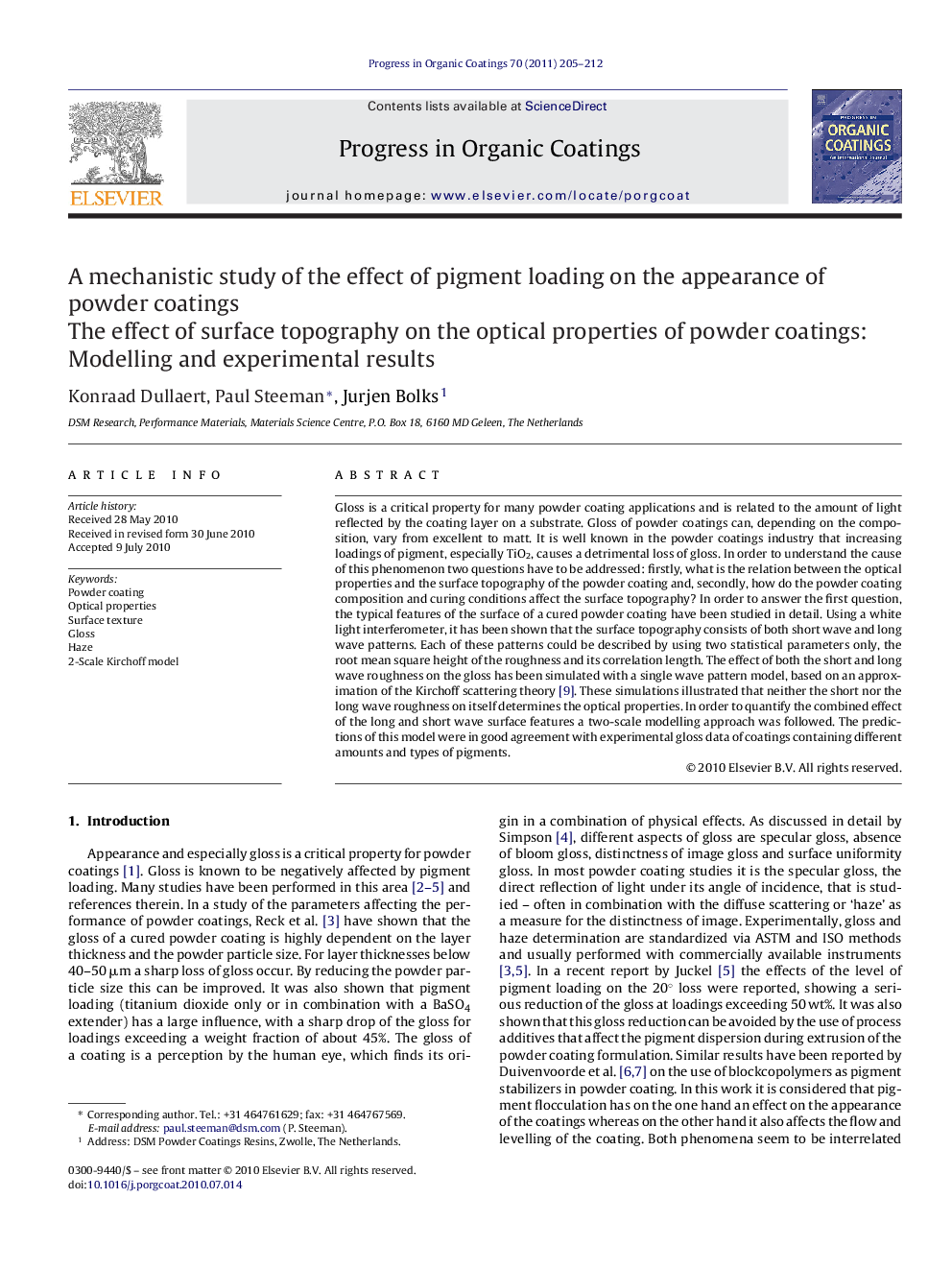| Article ID | Journal | Published Year | Pages | File Type |
|---|---|---|---|---|
| 693049 | Progress in Organic Coatings | 2011 | 8 Pages |
Abstract
Gloss is a critical property for many powder coating applications and is related to the amount of light reflected by the coating layer on a substrate. Gloss of powder coatings can, depending on the composition, vary from excellent to matt. It is well known in the powder coatings industry that increasing loadings of pigment, especially TiO2, causes a detrimental loss of gloss. In order to understand the cause of this phenomenon two questions have to be addressed: firstly, what is the relation between the optical properties and the surface topography of the powder coating and, secondly, how do the powder coating composition and curing conditions affect the surface topography? In order to answer the first question, the typical features of the surface of a cured powder coating have been studied in detail. Using a white light interferometer, it has been shown that the surface topography consists of both short wave and long wave patterns. Each of these patterns could be described by using two statistical parameters only, the root mean square height of the roughness and its correlation length. The effect of both the short and long wave roughness on the gloss has been simulated with a single wave pattern model, based on an approximation of the Kirchoff scattering theory [9]. These simulations illustrated that neither the short nor the long wave roughness on itself determines the optical properties. In order to quantify the combined effect of the long and short wave surface features a two-scale modelling approach was followed. The predictions of this model were in good agreement with experimental gloss data of coatings containing different amounts and types of pigments.
Related Topics
Physical Sciences and Engineering
Chemical Engineering
Process Chemistry and Technology
Authors
Konraad Dullaert, Paul Steeman, Jurjen Bolks,
